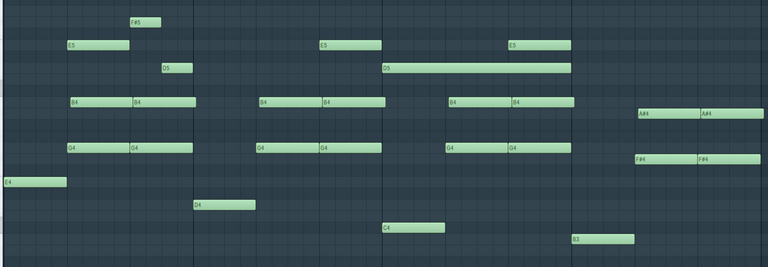Let's talk about... music scales // Winvanity music theory course #1
Authored by
@Winvanity
Hello,
Winvanity from this side. In the pilot article of a series on music theory, I would like to touch on the topic of scales in music. So let's start with a simple question.
What is scale in music?
ㅤA scale is called a group of sounds arranged in a specific pattern.These sounds can be made by the keys of a piano, the strings on a guitar or by covering the appropriate holes on a flute. And the templates themselves are meant to reflect the character of the piece being played. An example here is the major scale, which is used, for example, in pop songs. In the audio excerpt below, you can hear an example of the use of the major scale
(Unsupported https://open.spotify.com/embed/track/3tsCl3U9RUNHyRQnhKsBC6?si=9f7b82aae3564a7f)
ㅤThis scale is treated as the opposite of the minor scale. This scale, in turn, enters the tones perceived to us as sad. These scales differ in something called scale brightness. Below you can see an example of this scale as well.
(Unsupported https://open.spotify.com/embed/track/6XQtbLXKMdyeMr2lOkkNmS?si=bdc1ef01df9043a6)
how are the scales formed?
ㅤImagine a scale not as notes or keys but as a series of intervals between sounds. Shortening selected intervals (turning tones into semitones) gives a different sound to the piece. This is how with seven-tone scales, which is their most basic type, we can distinguish as many as seven of them.
What are the types of scales?
ㅤThere are seven main scales that are used in music production. Here is a list on which you will find all of them sorted according to their brightness In order from darkest to brightest.
Locrian Phrygian Minor Dorian Mixolydian Major Lydian
ㅤThere are more scales, of course, and I will try to show the use and sound of the rest of them in future articles, so stay tuned! Now it's time to about the modes, so...
What exactly is a mode?
ㅤThe mode is called what note the scale starts with and what note it ends on. For example, a Dorian scale starting on the note C and ending on C will be called a C Dorian scale. The next mode will be created when we move all the notes in the scale by one semitone - then the scale will start and end on C# notes. Similarly, this scale will be called C# Dorian. The next scale created in this way would be called D Dorian, then D# Dorian, E Dorian, etc. etc.

ㅤ So hey! Now you know why the piece Für Elise by Beethoven is also called a bagatelle in A minor. Because it was written in the minor scale in D mode. And now it's time to summarize what else we learned from today's article:
A scale is called an arrangement of notes according to which a piece of music is written that is intended to give it a selected feeling (brightness) for the listener.
The mode is called what note our scale will start with and what note it will end on.
In my next article, I'll cover how to use scales to build chords, so we'll see you soon!
0
0
0.000

Jesteś Polakiem? Używając tagu #polish pisz po polsku!
Możesz publikować posty w dwóch językach.
Pozdrawiam 🙂